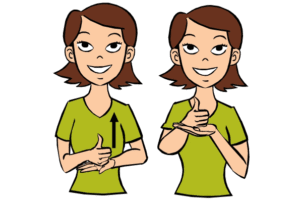Research has clearly proven the power of play in young children; particularly the impact of play on a child’s first 3 years of life. Play allows children to explore the world, while developing expressive and receptive language, social skills, fine and gross motor skills, and imagination, all while developing new skills and acquiring basic concepts.
When you sit down to play with your child, the direct 1:1 time that you have to spend undivided attention may be limited. So, here are some tried and true techniques to make the undivided playtime you offer to your child to be as effective as possible.
1) Follow your Child’s Lead
Let your child be in charge of showing YOU how to play with a toy, or object. Let him lead, as if you were playing follow the leader. Please don’t feel the need to be the ‘teacher’ all the time. Letting him lead the play will peak his interest, keep him engaged, and generally be more fun! Once your child has taken the lead, you might comment on what he is doing in his play with a few simple words. Here’s an Example:
Child’s (Leader) Action: Child pick up blocks and begins banging two blocks together.
Parent Response: “Blocks! Bang, Bang!”
Parent’s Action: Parent now picks up 2 blocks and bangs blocks together.
2) Repeat, Repeat, Repeat then…. Wait.
Modeling the sounds or language of play with a very high frequency of repetition is critical to a new language learner. When modeling with repetition, be sure to use inflection in your voice, or make up a rhythm. After modeling a sound, word, or phrase a number of times; wait. Give your child ample time to process this stimuli and have a chance to imitate. Here’s an Example:
Child’s (Leader) Action: Child puts a ball on a ramp. Ball rolls down ramp
Parent Response: “Doooown!” “Doooown!” “Doooown!” “Doooown!” (Each time ball rolls down ramp)
Parent’s Action: Parent holds the ball at the top of the ramp and WAITS; Giving child ample time to attempt the word “down!”
3) Eye Level Positioning
Nothing is more powerful in communication than face to face exposure. This might mean laying down on your stomach to face your child on the floor, or squatting down to your toddler as he stands. Face to face positioning allows for us to maintain eye contact, for us to ‘read’ one another, see facial expressions, gestures and one another’s general affect. It also allows for the child to optimally observe your articulators (mouth, tongue, teeth, lips) during speech production.
4) Read Your Child’s Non-Verbal Cues
Learn to be sensitive to his cues to see when he has had enough. It’s just as important to have the balance of being able to calm down and rest, both mentally and physically as it is to play with excitement and fun! This is especially important, as your child may not yet have the words to tell you he has had enough. Signs he is ready for a brake include: Acting distracted, becoming fussy, avoiding eye contact, or rubbing his eyes. Reassure your child you will play again very soon!
5) Special Toys… Not Required!
Play can happen at anytime with almost anything during the day! Please don’t feel the need to purchase specific toys, and feel like play can only happen in a perfect environment. Busy parents can learn to incorporate play into daily routines, such as bathtime or other daily chores, such as packing a lunch or walking the dog. For example, during bathtime:
Child’s (Leader) Action: Child splashes bubbles in tub
Parent Response: “bubble!” (splash, splash) “bubble!” (splash, splash) “bubble!” (splash, splash)
Even if it is for only a short time each day, your child makes amazing strides with your playful interactions. Through play you are helping your child to increase his self-confidence, brain development, social skills, as well as speech and language development.
Your play-time and love makes all the difference in the world to your child.









